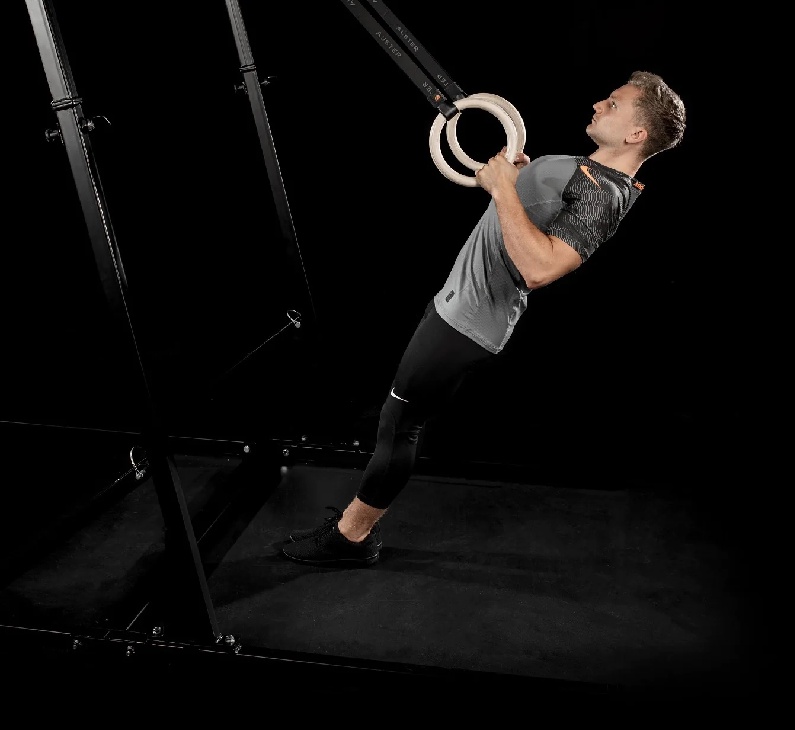Summary: In this comprehensive guide, we will delve into the benefits, proper technique, variations, and frequently asked questions about inverted rows.
Inverted rows, also known as bodyweight rows or Australian pull-ups, are a highly effective and versatile exercise that targets the upper body's muscles, particularly the back, shoulders, and arms. This exercise is a fantastic alternative to traditional pull-ups, especially for those who may still need the strength to perform full pull-ups or are looking to switch up their routine.
Benefits of Inverted Rows
Inverted rows offer a range of benefits that make them a valuable addition to any strength training routine:
- Upper Body Strength: The exercise primarily targets the muscles of the upper back, including the latissimus dorsi, rhomboids, and trapezius. It also engages the biceps and shoulders, contributing to overall upper-body strength development.
- Scapular Stability: Inverted rows promote scapular retraction and depression, enhancing shoulder stability and posture.
- Versatility: Inverted rows can be easily modified to suit different fitness levels and goals. By adjusting the angle or intensity, you can make the exercise more challenging or accessible.
- Accessible: Unlike pull-ups that require a bar, inverted rows can be performed using various equipment, including a barbell, TRX straps, rings, or a Smith machine.
- Reduced Risk of Injury: Inverted rows provide a lower impact alternative to heavy pulling exercises, reducing the risk of overuse injuries while still building strength.
Muscles Worked
Inverted rows engage a range of muscle groups, including:
- Latissimus Dorsi
- Rhomboids
- Trapezius
- Biceps Brachii
- Posterior Deltoids
- Erector Spinae
- Core Muscles (Stabilization)
- Forearm Muscles
How to Perform Inverted Rows Properly
- Setup: Attach a bar or rings to a sturdy anchor point at about waist height. Lie beneath the bar, holding it with an overhand grip (palms facing you) slightly wider than shoulder-width apart.
- Body Position: Keep your body straight from head to heels. Your heels should be on the ground, and your body should form a diagonal plank.
- Execution: Pull your chest towards the bar while maintaining a tight core. Imagine squeezing your shoulder blades together as you pull. Your body should remain straight; avoid arching your lower back.
- Top Position: Your chest should come close to the bar, and your elbows should be at a 90-degree angle. Pause briefly at the top of the movement.
- Lowering Phase: Slowly lower your body back to the starting position, fully extending your arms.
- Repetitions: Aim for 3-4 sets of 8-12 repetitions, adjusting the difficulty as needed.
Equipment Needed
- Barbell
- TRX Straps
- Rings
- Smith Machine
Variations of Inverted Rows
- Feet-Elevated Inverted Rows: Place your feet on a raised surface to increase the exercise's difficulty and engage the muscles more.
- Underhand Grip Rows: Use an underhand grip (palms facing away) to shift the focus more onto your biceps.
- Single-Arm Inverted Rows: Perform the exercise with one arm while keeping your body stable with the other.
Incorporating Inverted Rows into Your Routine
- Include inverted rows in your upper body workout routine, ideally after compound movements like bench press or overhead press.
- Superset inverted rows with push-ups for a balanced upper-body workout.
- Use inverted rows as part of a circuit training routine to enhance cardiovascular endurance.
Common Mistakes to Avoid
- Using Momentum: Avoid swinging your body to complete the movement. Focus on controlled and deliberate pulls.
- Arching the Lower Back: Keep your core engaged and maintain a straight line from head to heels.
- Not Fully Extending Arms: Ensure you fully extend your arms at the bottom of each repetition to maximize the exercise's range of motion.
FAQs (Frequently Asked Questions)
1. Can beginners perform inverted rows?
Yes, inverted rows can be modified to suit different fitness levels. Beginners can start with a higher bar angle or use a Smith machine for support.
2. Are inverted rows a suitable alternative to pull-ups?
Yes, inverted rows are an excellent alternative for individuals who are working towards building the strength required for pull-ups.
3. Can I do inverted rows at home?
Absolutely. If you have a sturdy anchor point and the necessary equipment (like TRX straps or rings), you can perform inverted rows at home.
4. How often should I include inverted rows in my routine?
You can include inverted rows 2-3 times weekly as part of your upper body strength training routine.
5. Can inverted rows help improve posture?
Yes, inverted rows can improve posture by strengthening the muscles supporting your shoulders and upper back.
Conclusion
Inverted rows are a dynamic and effective exercise that targets various upper-body muscles while offering versatility and scalability. Whether you're a beginner or a seasoned fitness enthusiast, incorporating inverted rows into your routine can help you achieve greater strength, stability, and overall fitness. Remember to focus on proper form, gradually increase the intensity, and enjoy the benefits of this challenging yet rewarding exercise.


No comments yet